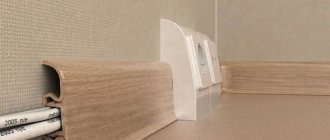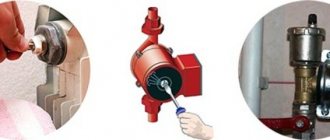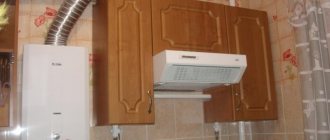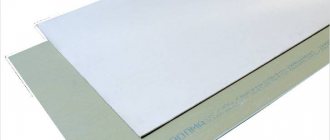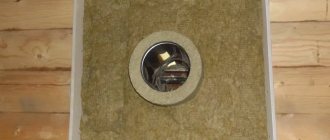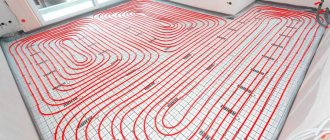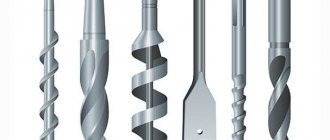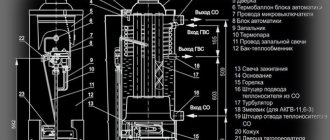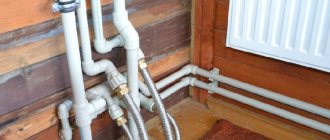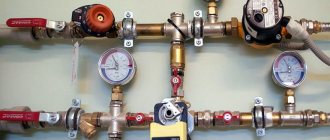With the beginning of the widespread introduction of plastic as a material for the manufacture of pipes, steel has somewhat lost its position, but metal pipes still remain in demand.
Painting heating pipes
There are several reasons for this:
- Strength of steel pipes. Thanks to this quality, they are unrivaled for use in high-pressure pipelines. This property allows the use of pipes with a wall several times thinner than that of plastic pipes.
- Low coefficient of thermal expansion. Due to this, when heated, a steel pipe has a linear expansion that is 15-20 times less than polyethylene pipes.
- Ability to provide 100% tightness. Therefore, steel pipes have no alternative when used in closed engineering systems.
The main disadvantage is their vulnerability to iron corrosion. Without protection against iron corrosion, pipes have a service life of no more than 10 years, and their performance begins to noticeably decline after two to three years of operation.
Painting a square metal pipe
To protect iron from corrosion, various methods are used, the most common of which is coating the surface of pipes with anti-corrosion paint. But the use of such paints requires the complete absence of rust on the surface being treated.
The problem is that steel begins to corrode iron from the moment it is manufactured, which is why the surface of the pipes must be thoroughly cleaned before painting. Processing is a labor-intensive and costly process; often such processing is simply impossible due to the inaccessibility of the required area.
The problem is solved by using paints that can be applied to metal over rust.
Types of paints for metal surfaces
Paints used for application to metal surfaces are divided into the following types:
- Oil paints consisting of natural oils. They are sensitive to temperature changes, so they are used for painting indoor pipes. They provide some protection against corrosion, but its degree is low and the protection does not last very long.
- Epoxy enamels that contain toxic resins. They are mainly used to protect industrial pipelines. But their main purpose is to provide protection from high-temperature influences; they protect against corrosion only slightly better than oil paint.
- The main area of application of alkyd paints is painting galvanized steel surfaces. They are characterized by a high degree of adhesion to the working surface, but at the same time, they cannot withstand high temperatures and easily catch fire.
- Of all the above types of paints, acrylic paints provide the best anti-corrosion protection. Due to their immunity to temperature fluctuations, they can be used for both indoor and outdoor use.
Metal paint
Important! Before painting, you should make sure that it corresponds to the temperature conditions in which the painted product is expected to be used.
Which pipes can be hot-painted and which cannot?
In theory, any pipes can be hot painted, be it metal or polypropylene.
The only thing is that the quality of the coating may require the best. Since paint enamels, when heated, will leave streaks. Therefore, all experts advise carrying out work only by turning off the heating system.
The fact is that the paint, no matter how good it is, is still designed for a cold surface and normal drying. If the process is combined with heating, the air in the room will be poisoned by toxic fumes.
But what to do if you still need to urgently paint the radiator? Use less dangerous compounds, thoroughly ventilate the room, and even better, go somewhere for 2-3 days until everything dries. For example, that’s what I did with my family.
Features of paints for working on rust
In order for rust paint to provide maximum anti-corrosion protection, manufacturers use a combined approach, trying to combine the properties of conventional paints with the properties of a protective primer and a rust converter.
Because of this, the range of such paints is very diverse and every day it is replenished with new names. The same can be said about their recipe.
Rust paints can be very roughly classified according to the following criteria:
- What main type of paint are they based on?
- For what purposes are they intended?
- What temperature conditions are they designed for?
- What are the main components included in their composition?
Painting a metal pipe
It is not surprising that it is not easy to classify rust paint as a specific type. Each description represents a combination of different performance characteristics.
This can be illustrated using the example of one of the most popular groups of dyes – hammer dyes.
Instructions for painting heating pipes in an apartment
Repairing an apartment by the hands of specialists is an expensive pleasure. And therefore, many owners strive to do some of the work themselves. Painting heating pipes should not cause fears that you can ruin everything. If you carefully read the instructions on how to paint heating pipes, you will be able to do everything correctly.
Paint prevents corrosion of pipes and radiators
We all know that paint, applied even in a small layer, serves as protection for water and heating pipes. It prevents their corrosion. In addition, using paint of a certain color, you can complement the interior or simply successfully fit pipes and a radiator into it. And even if the radiator you bought already has a suitable color and a protective layer against corrosion, the same cannot be said about the pipes.
It doesn't matter what material they are made of. It is better to treat plastic and metal pipes with paint. There are a number of reasons why this measure must be carried out without fail:
- The old paint layer has become peeling, cracked, or otherwise damaged.
- You have just installed pipes that do not yet have corrosion protection.
- The need to create completeness in the interior, decorating heating elements.
- A planned measure to prevent damage to the heating system.
Hammer paint for rust
Hammer paint owes its name to the appearance of the finish it creates. It looks like it was hammered with a small hammer. This effect is achieved due to the fact that it contains aluminum and silicone components.
Any hammer paint has increased adhesion, that is, hammer paint provides high-quality adhesion to the surface being painted. Therefore, painting can be done over rust.
Important! Hammer paint cannot be applied to surfaces that have flaking rust. In this case, preliminary cleaning is necessary before painting.
Typically, hammer paint is produced in the form of a suspension of anti-corrosion metal pigments and fillers in synthetic resins or varnishes, supplemented with silicone and other components.
Thanks to pigments, it is available in a wide range of colors: black, blue, yellow and so on. But the most popular are black and brown paint, since painting with them gives the maximum decorative effect.
Functionally, hammer paint acts as a primer, as an anti-corrosion protection, as a rust converter due to inhibitors, and as a decorative enamel, which provides additional protection.
Hammer paint for rust
Therefore, it is not necessary to apply a separate primer before painting.
Hammer enamel is used for painting not only steel, but also galvanized surfaces. In addition, it can be used for painting surfaces made of non-ferrous metals.
Before use, the enamel is mixed to obtain a homogeneous mass.
The working surface is cleaned with a stiff brush and degreased.
- The first layer of enamel acts as a primer.
- The second layer, due to the silicone elements that the enamel contains, enhances the anti-corrosion effect, preventing the infiltration of moisture microparticles through the protective layer, resulting in the creation of a waterproof film.
- The third layer acts like hammer enamel, creating a decorative effect and at the same time being another barrier to corrosion.
Thus, a line of triple protection against iron corrosion is created, waterproof and sufficiently resistant to mechanical stress.
Important! Hammer paint is not heat resistant. As a rule, its operation is allowed at temperatures not exceeding 150 degrees.
Color selection
Manufacturers of paints for heating pipes usually offer several different shades of paints and varnishes. You need to choose one color or another based on your aesthetic taste, the interior features of the room and the available lighting. In addition to standard colors, some prefer to use metallic dyes that imitate bronze, chrome, silver, and gold. In addition, you can combine several shades with each other, you can apply patterns to heating appliances or heating pipes.
If you focus on heat transfer, then it is best to use a dark paint color, because it enhances the heat transfer from heated pipes.
Aerosol paint for metal
Aerosol paint for metal against rust comes in three types:
- Standard, used for simple one-layer painting.
- Double, which acts as primer and enamel. Its advantage is that before painting the surface there is no need to apply a separate primer to it.
- A universal aerosol paint that simultaneously acts as a primer, regular enamel and a rust converter.
Aerosol paint for metal
To work on rust, type 3 aerosol paint is used. One can of it is enough to apply to a surface of approximately 3.5 m2, with a layer 0.05 mm thick. Therefore, spray paint on metal is not used over large areas. It is advisable to use it for small surface areas.
Aerosol paint for metal and rust is especially convenient for touching up damaged paint layers and for painting hard-to-reach places.
As a rule, aerosol paint for metal against rust is multifunctional; in addition to working on steel surfaces, it is suitable for painting non-ferrous metals, as well as wood, plaster and stone.
Color solution
What color should you paint gas lines?
According to the source of information (Safety Rules for the Gas Distribution System), painting occurs as follows:
1. A gas pipeline passing above the ground must be painted with two layers of yellow paint. Varnish and enamel of a similar color are also allowed. The dye must meet the requirements of the substance for work on the outside of the product. Color marking is necessary to identify an object.
2. The gas system, which runs over the facades of the structure, may have the color of the structures that enclose it.
We recommend: What paint to paint a gas pipe: how to paint it correctly
Painting of internal gas pipeline structures inside residential premises and the color scheme for them are not provided at all.
Owner search
Who is responsible for painting the gas pipe?
Many people ask this question. Unfortunately, the person responsible for such a process has to be found separately in each individual case. In such cases, you must be guided by the gas pipeline line maintenance agreement.
In certain areas, responsibility is distributed in this way
:
1. In apartment buildings, pipeline lines inside each apartment must be painted by the owners of the apartments. Those gas pipes that run along facades, entrances or streets must be painted by the gas supply companies or local utility service (the terms of the service contract must contain such obligations). To divide the zone, you must be guided by the walls of the apartments . It must be taken into account that such duties relate only to painting pipes. But maintenance actions regarding the shut-off elements of the valves should be performed only by the gas service.
2. In private houses, the gas pipeline located on a private plot is painted by the owners of the house. The gas pipeline located in a public area was painted by representatives of the gas service. A gas pipeline that runs through the private territory of a house may be controlled by an organization that supplies gas, but then such an authority may require home owners to pay for the service of painting gas pipeline structures.
how to paint gas pipes in the private sector
Properties of aerosol against rust
Spray paint creates a durable finish. The waterproof protection it creates serves as a reliable barrier against atmospheric moisture and temperature changes. It also plays a protective role against moderate chemical exposure. Therefore, it can be used for both domestic and industrial facilities.
During operation, it shows high physical stability, so the coating formed by it is quite elastic, does not delaminate or crack.
Usually on aerosol cans it is written that it is heat-resistant. But it must be remembered that it contains rust converters, which are vulnerable to high temperature exposure. Therefore, the painted coating is intended for use at temperatures not exceeding 150 degrees.
If it is expected that the product to be painted will operate in an environment with a higher temperature, a special heat-resistant aerosol of the second type is used. It is worth mentioning that before painting with such an aerosol, primer must be applied to the working surface.
The first layer dries to a non-sticky state in a quarter of an hour, its complete drying occurs in half an hour.
Rust paint
The second layer can be applied two hours after the first layer has dried.
Popular manufacturers
Here is a list of proven, popular and reliable paints for heating pipes:
- Dufa Heizkorperlack;
- Radiator Paint;
- Elementfarg Alkyd;
- Millertemp;
- Mipatherm 600;
- Radiator;
- UNIPOL enamel;
- GF-0119;
- VD-AK-1179.
Each of these paints and varnishes has its own composition, properties and technical characteristics. In addition, they have different prices. It is necessary to select a coloring solution based on financial capabilities, available shades of dye and personal preferences.
Preparing the work surface
- Surface treatment for aerosol painting is carried out in the same way as for rust enamel in the form of a suspension.
- The surface is cleaned with a stiff brush to remove dirt deposits, loose rust and old paint residues.
- Then it is degreased using gasoline or acetone.
- After this, the surface is washed with soapy water and dried.
Cleaning pipes from rust
What tools and materials will still be needed?
Heat-resistant silicone enamel in a can requires only a respirator and gloves. The application job is done quickly.
As for tools and materials for preparing the surface, a regular cord brush, a little acetic acid to remove rust and a couple of rags will do.
Preparing batteries for painting
I started by removing dust and dirt from the battery, then proceeded to remove the rust stain on the radiator. I rubbed the problem area several times with a vinegar rag and cleaned the surface with a cord brush.
Tip: Once the surface is prepared, do not forget to protect the wall behind the radiator. Attach cardboard or oilcloth to the wall with masking tape before you begin painting the radiator.
I used regular wrapping paper and glued it to the window sill. It wasn't wide enough for the radiator, but I just moved it as I moved towards the end of the battery.
Mode of application
When using an aerosol, you must shake the can periodically. An indicator of its readiness for use is the free movement of balls inside it, which serve to mix the composition.
When spraying, the can should be held in a vertical position, evenly making back-and-forth movements. The work is carried out from a distance of 20 cm.
The use of aerosols is possible in a temperature range from +5 to +32 degrees Celsius.
If necessary, remove paint; fresh paint can be removed with acetone, and dried paint can be removed with a special remover.
